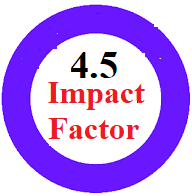SECURING THE FUTURE, THE DUAL ROLE OF ARTIFICIAL INTELLIGENCE AS A THREAT AND A TOOL IN MODERN CYBERSECURITY
Abstract
This study explores the counterintuitive nature of AI in cybersecurity today. It is looking at its potential applicability in terms of protecting the digital infrastructure and examining the dangers of mishandling the technology. AI enhances defense systems by use of predictive analytics, anomaly identification and automated response systems. AI presents an opportunity because malicious groups use it to conduct advanced attacks like deepfakes, intelligent phishing and malware that is created using AI. The research is based on a qualitative and quantitative mixed-methods technique. A review of the literature was made to study the existing AI-based tools of cybersecurity and the tactics of attacks. The results indicate that the connection between AI and cybersecurity is complicated since innovations are only followed by increased vulnerability. AI drastically enhance the speed of threat identification, the responsiveness of a system, and its resilience, dual-use capabilities impose ethical requirements that require proactive implementation, superior governance, and counter-AI strategies. It is merged with the realm between the positive impacts of the role of AI in defense. The negative impacts that could demonstrate the exploitation of this running defensive technology.
Keywords
( Artificial Intelligence, Cybersecurity, Machine Learning, Anomaly Detection, Intrusion Detection Systems, Cybercrime, Zero Trust Architecture, AI Governance, Cyber Defense, Intelligent Phishing).
















